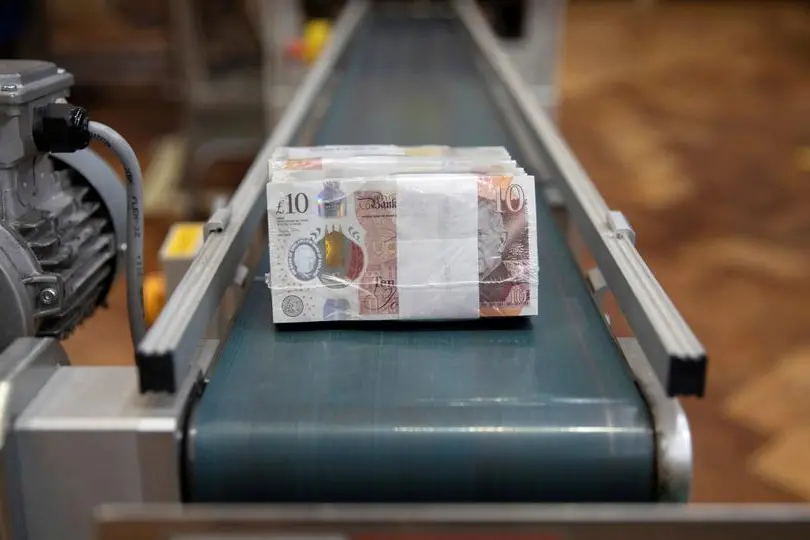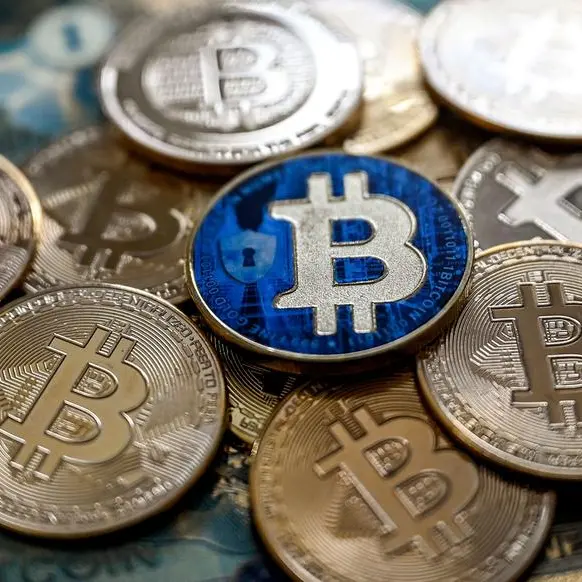PHOTO
The production of the new King Charles III 10 pounds note by the Bank of England is seen in this undated handout picture. Bank of England/Handout via REUTERS
Business activity data helped lift the pound to a new 13-month high against the dollar on Thursday and kept the euro just shy of a similar peak, with the equivalent U.S. numbers and jobless claims figures to come later in the day.
Sterling rose 0.21% to $1.3129, its highest since July 2023. Should it squeeze past the $1.3143 hit then, the British currency would be at its highest since April 2022.
The euro was down 0.1% at $1.1137, on slightly softer euro zone data and slowing wage growth, but still near the $1.11735 reached on Wednesday, its firmest since July 2023.
Both currencies have been supported in recent weeks by weakness in the dollar as a dovish Federal Reserve and fresh signs of weakness in the U.S. jobs market back the case for interest rate cuts.
Markets are now pricing in more rate cuts from the Federal Reserve by year-end than for the European Central Bank or Bank of England.
But it was developments in Europe that were to the fore on Thursday, with Britain's composite purchasing managers index (PMI) rising to 53.4 in August, the highest reading since April and above expectations.
Readings above 50 denote growth. The euro zone composite figure rose to 51.2, also above expectations, though analysts said the number was flattered by a rise in French services activity due to the Olympics.
Data also showed that euro zone negotiated wage growth slowed sharply last quarter, which Bert Colijn, ING's senior economist for the euro zone, said would pave the way for an ECB rate cut in September.
"The European Central Bank has remained uncomfortable with cutting interest rates while wage growth is elevated. Today’s drop will bring some relief for those looking for a gradual cutting cycle," Colijn said in a note.
He also said the PMI data would give hawks little reason to object to a September cut.
FED FOCUS
The dollar was 0.55% firmer against the yen at 146.1, with the rate sensitive currency pair supported by a move higher in U.S. Treasury yields.
That left the dollar index, which measures the greenback against a basket of currencies including the euro, sterling and yen, up 0.2% at 101.34.
The index dipped to 100.92 on Wednesday for the first time this year, softening as markets become more confident the Fed is on track for rate cuts starting in September.
Traders now price in a 30% probability of a 50 basis point (bp) cut at the central bank's Sept. 17-18 meeting, and are fully pricing a 25 bp reduction, according to the CME Group's FedWatch Tool.
But Fed policy maker Jeff Schmid, sounded a cautious tone in Thursday remarks that did not point to a large move.
Rates are not overly restrictive and policy makers have room to consider where to go from here, he said.
Weekly U.S. jobless claims data is due later on Thursday and Fed Chair Jerome Powell will deliver a hotly anticipated speech at the central bank's annual Jackson Hole symposium on Friday.
Other central bankers, including Bank of England governor Andrew Bailey and ECB chief economist Philip Lane, will also speak at Jackson Hole, while Bank of Japan Governor Kazuo Ueda will testify on Friday in a special session of parliament that will scrutinise the BOJ's decision to unexpectedly raise rates at the end of last month.
Ueda's hawkish stance helped spur a rapid unwind of bearish yen positions and a violent sell-off in Japanese stocks.
Elsewhere, the Swiss franc was somewhat firmer, with the dollar down 0.16% at 0.8504 francs while the Australian dollar was flat at $0.6745.
(Reporting by Kevin Buckland in Tokyo and Alun John in London; Editing by Jacqueline Wong, Kirsten Donovan)





















